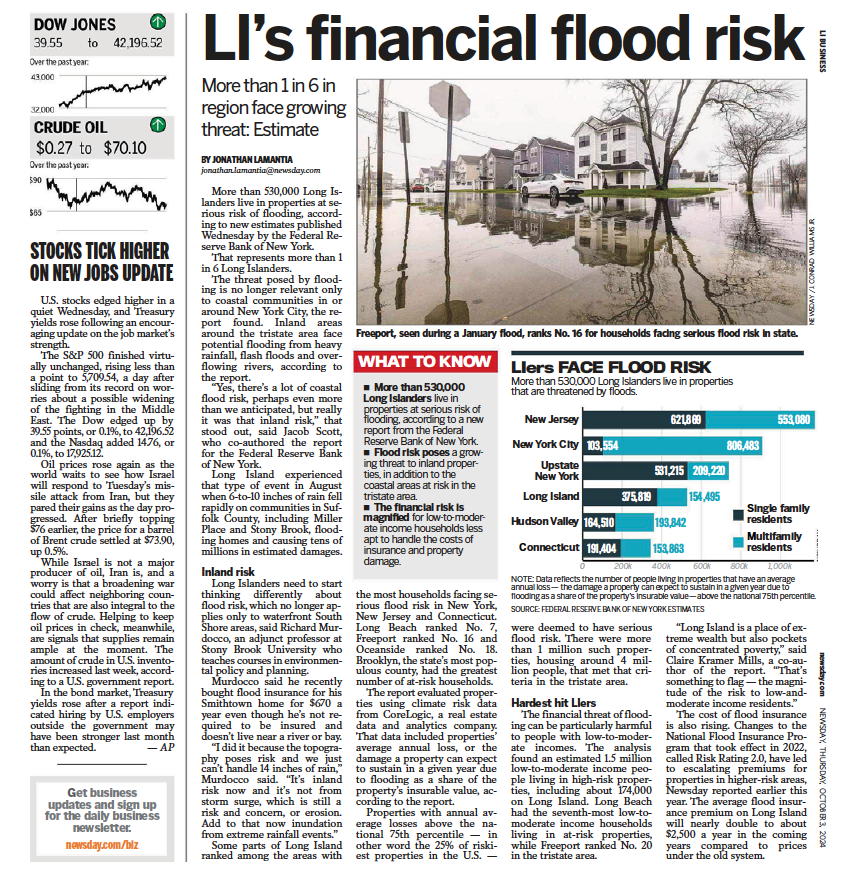The following was published by Long Island Business News on May 1st, 2013:
I’ve been hearing a lot about Connect Long Island, County Executive Steve Bellone’s plan to tie current and proposed transit-oriented development projects and downtowns together through the creation of north-south Bus Rapid Transit routes.
Proposed BRT routes include Nicholls Road, the Sagtikos Parkway and Route 110. The goal is to link BRT lines with existing east-west railways to provide access to universities, new job sites and affordable housing.
According to the press release issued by the county, “the Connect Long Island initiative aims to create new mass-transit connections between major roadways, Long Island Rail Road stations and transit-oriented downtowns to relieve traffic congestion, increase mobility and spur economic growth.” The idea is to link regional centers throughout Suffolk County.
In Bellone’s own words, “We have these great, great assets, but what we haven’t done is connect all the pieces in a way that will allow us to use them to maximum advantage for our region. Suffolk County can be an economic powerhouse.”
Bellone has pitched the concept as anything from vital to our regional hurricane preparedness efforts to Suffolk’s answer to the brain drain. In a January 2013 press release, Bellone stated:“Young people are leaving the Long Island region at record rates. We have a lack of quality affordable housing, a lack of high paying jobs and high volume of traffic on our roadways. The only way to combat these problems is to create sustainable long-term economic growth.” The release went on to highlight Connect Long Island as the answer to creating sustainable growth in Suffolk County.
The concept is valid, but the sales pitch is flawed.
Thanks to the flawed pitch, the plan has its detractors. A recent LIBN op-ed by fellow policy wonk Martin Cantor summed up arguments against the proposal rather nicely:
Connect Long Island makes little sense considering that there is no current demand for a bus service that won’t materialize for two decades, will cost millions of dollars that Suffolk doesn’t have and requires new buses, new road systems and old expensive labor.
Cantor goes on to say:
Rather than opining on a bus system that will benefit few Long Islanders, Bellone should use his bully pulpit to focus attention on bold issues impacting all Suffolk residents, including the Island’s financially suffocating property taxes and utility costs.
I admire any time an elected official backs a proposal to bring a sense of regional cohesion to Nassau-Suffolk. Since the early 1960s, regional planners on Long Island have long advocated for the concept of corridors, clusters and centers, and I feel that Bellone’s BRT proposal builds off of this decades old concept.
However, I do not agree with shoehorning of unrelated issues to make the pitch palatable to the public. If the county executive is selling BRT, which is a valid concept in its own right, his pitch shouldn’t overpromise. For example, Long Island’s storm hardening efforts require appropriate coastal zone management and preparation. BRT is far from the priority when it comes to these efforts. In terms of affordable housing and the retention of the region’s young professionals, BRT is a small piece to a complex puzzle. We, as a region, have bigger priorities in addressing our affordable housing and brain drain issues. While Cantor’s arguments are a bit cynical, he is right in addressing the realities. High utility costs and taxes are suffocating growth. They shouldn’t stifle our ability to think long term and regionally as well.
This highlights the issue with the sales pitch. The proposed BRT system is a valid concept on its own; it’s the association Bellone is making with these other issues that weakens Connect Long Island’s sales pitch. The BRT system deserves to be sold on its own merits. The fact is that the project will connect train stations to employment hubs. Further, Suffolk County should show that there is demand from residents for north-south transit linkage. BRT would reduce traffic, lower environmental impact and showcase Suffolk’s potential for innovative new policy solutions to decades-old problems. The project is right for the region, but the sales pitch is off.
Long term planning from the county level of government is hard enough as it is. From decreased sales tax revenues, to unfunded mandates, the county’s ability to implement sweeping, comprehensive change is difficult at best. For important undertakings such as Connect Long Island, it is critical to sell the project to the public correctly. Long Island’s regional woes are important, complex and interrelated. This is why we need a detached regional entity to start prioritizing regional projects. Let’s take a step back and tackle them one step at a time.
Richard Murdocco is the principal grantwriter for Community Development Corporation of Long Island, although the views expressed in this post are Murdocco’s alone and not shared by the CDCLI. Follow him on Twitter @TheFoggiestIdea.










